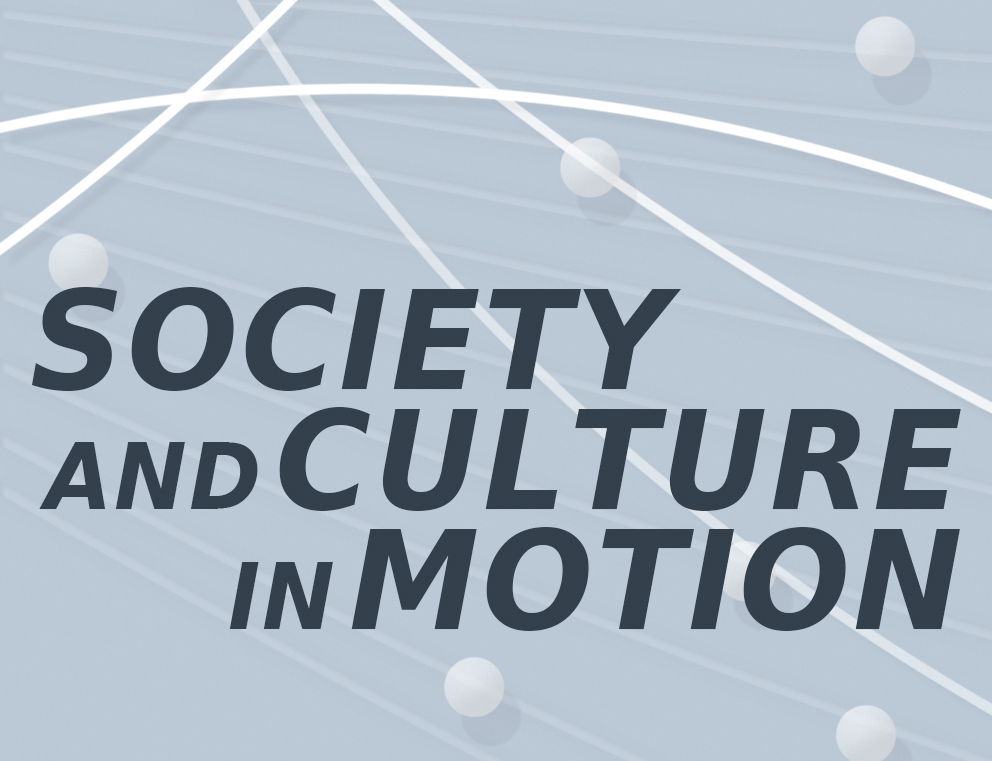Study Day: Popular Culture and Literature: Universal and Particular Features - Protocol of study day
Organising section: 1 Text and context
Organisers: Prof. Dr. Stefan Leder, PD Dr. Hans Harder, Dr. Asma Hilali
Study day subject: Popular Culture and Literature: Universal and Particular Features
Place: Max Planck Institute for Social Anthropology, seminar room
Time: April 12, 2006 13:00-18:00
Participants: Prof. Dr. Jürgen Paul, Prof. Dr. Stefan Leder, Sourav Kargupta, Felix Otter, Lutz Greisiger, Nicole Keusch, Dr. Susanne Klien, Dr. Elvira Wakelnig, Kai Porwoll, Dr. habil. Ildikó Bellér-Hann, Antje Lenora, Prof. Dr. Christian Oberländer, Nicky Göttling, Inga Beinke,Thomas Anzenhofer,
Structure of the study day:
After a short introduction by session chair PD Dr. Hans Harder there were several papers presented and individually discussed. (In this protocol either the abstracts submitted beforehand by the participants or a short summary of the individual presentations are provided.) The session was subsequently closed by a general discussion regarding the topic of the study day.
Individual papers and discussions:
General discussion:
Dr. Harder asked the specialists of Arabic literature about the category of "popular culture". Prof. Leder precised that the categories "popular/elite" exists in the Muslim medieval society, but the concept of "popular culture" does not exist in the Arabic Muslim thought. However there are some categories closed to the signification of "popular culture": for example, we find the category of "popular poetry" or "poetry of the common people". The Arabic attributes linked to the "popular culture" evoke a pejorative judgment, a sort of contempt in opposition of an idea of the high culture. Dr. Hilali added that one common aspect between Japanese popular culture and Arabic popular literature is the motif of local heroes. There are different versions of one popular story in the Arabic world with various heroes. The variety of the heroes depends on the area of circulation of the story.
Sourav Kargupta repeatedly remarked that the discussants kept conflating and confusing "people’s art" (eg. folk songs) and "popular culture" (eg. Harry Potter, Japanese manga).
Appendix I:
The general discussion was followed by a social gathering where the dispute did not cease to continue. Lutz Greisiger mentioned a point which was considered noteworthy here.
Jazz music began as a form of "folk music" of a marginalized group in northern American society. In the 20s and 30s Jazz became a major trend in popular music. Not only the Nazi ideologists considered Jazz as "Negermusik" and as cultural degeneration - theorists of the "Frankfurter Schule" criticized Jazz as a product of the "culture industry". Theodor W. Adorno saw the people ’dancing to the rhythm of their own suppression’. In the 40s Jazz reached a hay day of popularization in the US (Big Bands, Swing). At the same time small circles of musicians (re)constituted their music as a means of the emancipation of the black ’minority’ (Be Bop). From there Jazz evolved into a highly sophisticated art-form as which it is considered mainly by the European public. While Jazz in the US is still perceived as a form of popular music musicians often ’emigrate’ to Europe where the are acknowledged as authorities and even are appointed to professors at conservatoires and Universities. Within a few decades (and a relatively small spatial range) Jazz evolved from a feature of "folk culture" to one of "popular" and "mass culture", to a ’anti-official’ medium of social protest and to a highly estimated form of art and integral part of "official culture".
Appendix II:
Due to yet unexplained technical problems one commentary on the introductory note of the study day got lost in cyberspace. As a supplement to the study day discussion we decided to provide in this protocol also the missing e-mail of Lutz Greisiger:
Popular legends are playing an important role in the interaction of religious (or generally: socio cultural) communities which share common religious and cultural traditions. One could, for instance, write the history of Jewish-Christian relations merely in terms of the evolution of legends (and counter-legends), myths and folktales and their representation of the respective others and of the relations with them.
An example is the Late Antique Jewish legend of a soldier named Panthera who was said to have seduced Mary and to be the natural father of Jesus, thereby polemising against the Christian claim of the virgin birth. This story seems to have crossed the boundaries of Jewish and Christian traditions several times undergoing several metamorphosises. So it is integrated into genealogical lists of Jesus, extant in a number of Christian literary works, where Panthera is turned into the grandfather or great-grandfather of Jesus, thereby neutralising the menacing story. Some time later the motif of the adulterous parentage (involving a Roman soldier) was devolved from the (false) Messiah to the Antichrist. In this form it (re-)occurs in 7th century Christian apocalyptic texts but it is not clear whether this metamorphosis is of Jewish or Christian origin.
The story seems to be of popular origin but became so influential that it was received widely in ’official’ literature. Another aspect of the virtue of popular legends, even in religious/cultural interaction is their ambivalent relation with power.
A well studied example is medieval anti-Judaism. Popular legends can undermine authority and power, as was the case in the anti-Jewish revolts prior to the arrival of the crusaders in many towns and cities of France and Germany in 1096. Accusations of ritual murder, poisoning of the wells and the like, in combination with the crusadepropaganda caused pogroms with in numerous victims. This was against the interests of secular and ecclesiastical authorities who were economically dependent of the wealthy Jewish communities. Contrariwise citizenries frequently exploited those anti-Jewish legends and provoked such pogroms to expel the Jews and to disease them in order to get rid of their creditors and debts.
In a broader perspective we should clarify the notions of "legend" and "myth" and their relations to ideology. Furthermore one might ask for the relevance of popular/official in the context of the dynamics of fundamentalist movements.
Kai Prowoll





